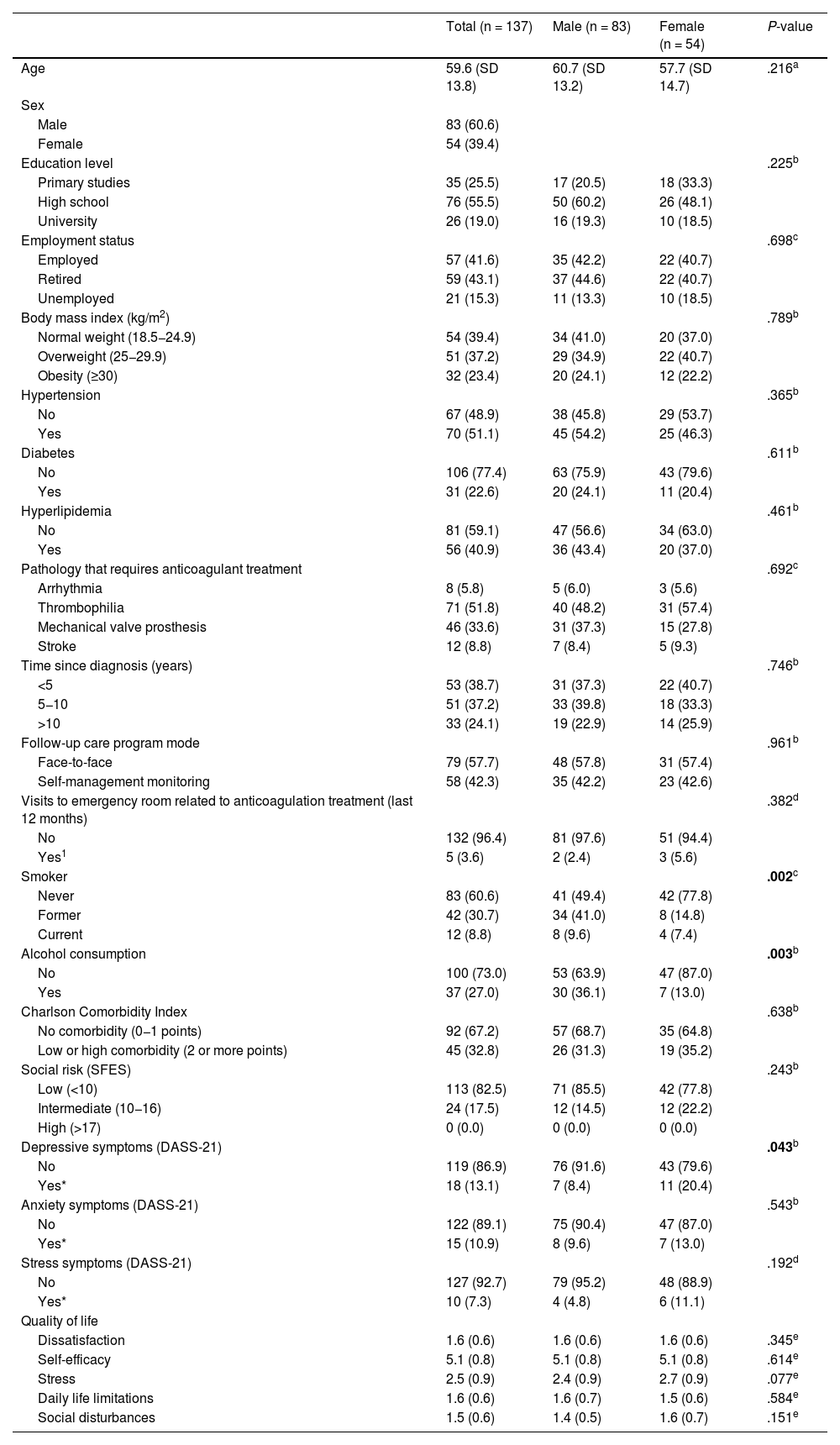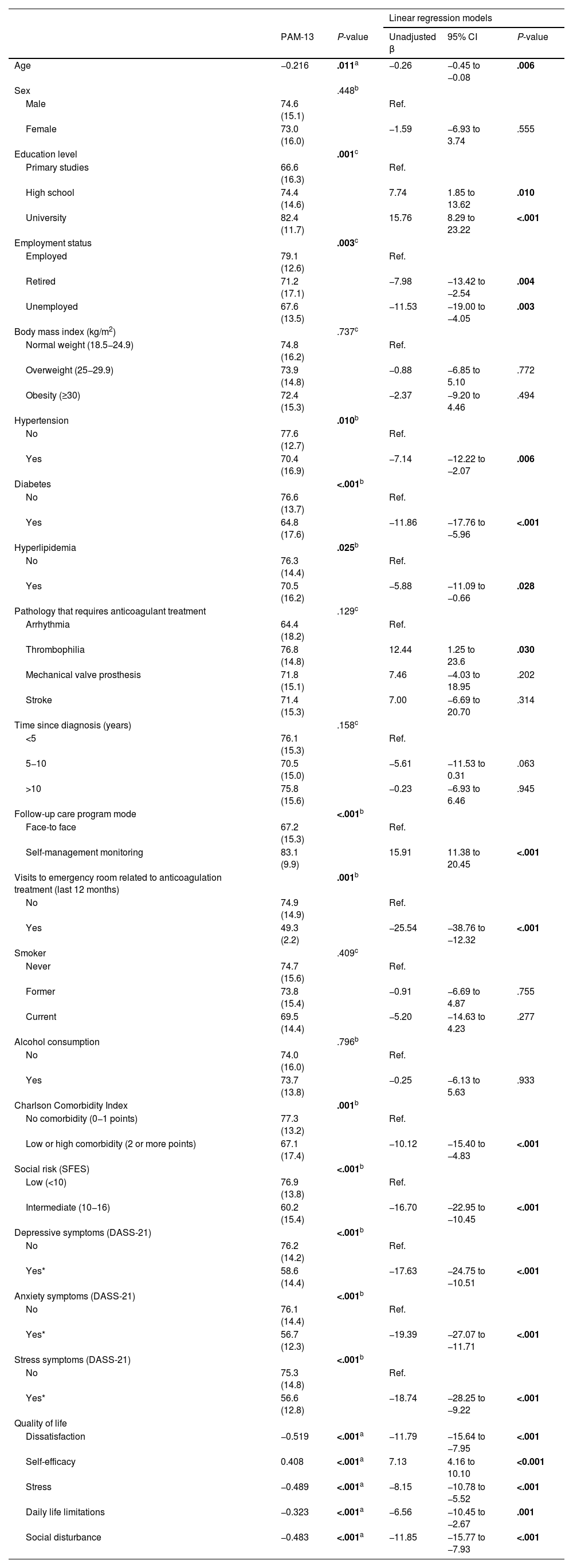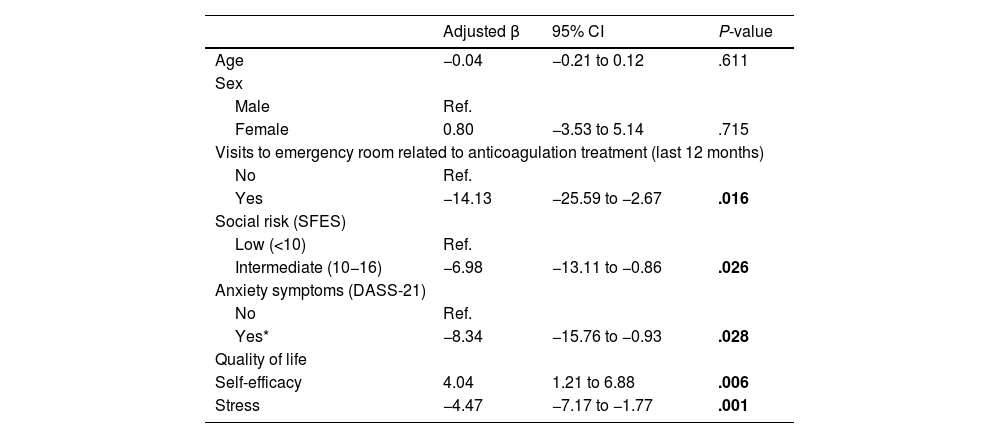The terms “patient activation” and “patient empowerment” are used to describe the extent to which individuals are able to manage their own healthcare. Health outcomes and quality of life improve in patients who are more active in health care. The aim of this study was to identify sociodemographic, clinical, sociological and psychological determinants associated with activation in a group of chronically anticoagulated patients.
MethodsCross-sectional study of patients treated with oral antivitamin-k drugs attended at a specialized outpatient anticoagulant unit between November 2021 and June 2022. The main dependent variable was the level of patient activation according to the 13-item Patient Activation Measure (PAM-13). Simple and multiple linear regression models were conducted to identify the determinants associated with PAM-13 score.
ResultsA total of 137 patients who met all the inclusion criteria were recruited for the study. The mean age was 59.6 years (SD 13.8; range 22–86) and 60.6% were male. Sixty per cent presented a level IV of activation according to the PAM-13 scale. Mean patient activation score was 73.9 (SD 15.4). The factors independently associated with significantly lower activation were: emergency department visits in the past 12 months, intermediate social risk, anxiety symptoms, stress symptoms and low self-efficacy.
ConclusionsFive determinants were found to be associated with activation. Knowing the factors that modify the level of activation can help to identify subgroups of chronic anticoagulated patients who are less likely to engage in self-management and are therefore candidates for tailored educational interventions.
Los términos «activación del paciente» y «empoderamiento del paciente» se utilizan para describir hasta qué punto los individuos son capaces de gestionar su propia atención sanitaria. Los resultados de salud y la calidad de vida mejoran en los pacientes que son más activos en el autocuidado. El objetivo de este estudio fue identificar determinantes sociodemográficos, clínicos, sociológicos y psicológicos asociados a la activación en un grupo de pacientes crónicamente anticoagulados.
MétodosEstudio transversal de pacientes tratados con antivitamina K oral atendidos en una unidad ambulatoria especializada en anticoagulantes entre noviembre de 2021 y junio de 2022. La variable dependiente principal fue el nivel de activación para el autocuidado según la Medida de activación del paciente de 13 ítems (PAM-13). Se realizaron modelos de regresión lineal simple y múltiple para identificar los determinantes asociados a la puntuación PAM-13.
ResultadosSe seleccionó para el estudio un total de 137 pacientes que cumplieron con todos los criterios de inclusión. La edad media fue de 59,6 años (DE 13,8; rango 22–86) y el 60,6% eran varones. El sesenta por ciento presentó un nivel IV de activación según la escala PAM-13. La puntuación media de activación fue de 73,9 (DE 15,4). Los factores asociados de forma independiente a una activación de autocuidado significativamente menor fueron: visitas al departamento de urgencias en los últimos 12 meses, riesgo social intermedio, síntomas de ansiedad, síntomas de estrés y baja autoeficacia.
ConclusionesSe encontraron cinco determinantes asociados a la activación. Conocer los factores que modifican el nivel de activación puede ayudar a identificar subgrupos de pacientes anticoagulados crónicos que tienen menos probabilidades de autocuidado y, por lo tanto, son candidatos a las intervenciones educativas personalizadas.










